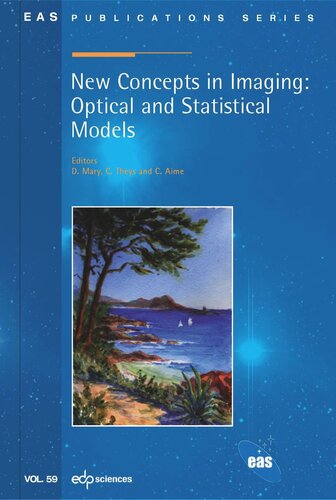

Most ebook files are in PDF format, so you can easily read them using various software such as Foxit Reader or directly on the Google Chrome browser.
Some ebook files are released by publishers in other formats such as .awz, .mobi, .epub, .fb2, etc. You may need to install specific software to read these formats on mobile/PC, such as Calibre.
Please read the tutorial at this link: https://ebookbell.com/faq
We offer FREE conversion to the popular formats you request; however, this may take some time. Therefore, right after payment, please email us, and we will try to provide the service as quickly as possible.
For some exceptional file formats or broken links (if any), please refrain from opening any disputes. Instead, email us first, and we will try to assist within a maximum of 6 hours.
EbookBell Team

0.0
0 reviewsThis book is a collection of 19 articles which reflect the courses given at the Collège de France/Summer school “Reconstruction d'images − Applications astrophysiques“ held in Nice and Fréjus, France, from June 18 to 22, 2012. The articles presented in this volume address emerging concepts and methods that are useful in the complex process of improving our knowledge of the celestial objects, including Earth. The book contains three parts. The first part is titled “Physical bases and new challenges in high resolution imaging“. This part draws a picture of some of the high angular resolution instruments of the near to far future, and of the issues to overcome to make this picture real. It deals with hypertelescopes, optical interferometry, adaptive optics, wavefront coding, and with polychromatic astrophysical models. The point of view of the articles of the second part, titled “Physical models and data processing“ embraces not only the description of data using physical modeling, but also the resulting data processing in radio and optical interferometry, including hypertelescopes. The third part is titled “Statistical models in signal and image processing“. These contributions cover past and recent developments in multiresolution analysis, Bayesian modeling, sparsity, convex optimization and hyperspectral data. While reading, the alert reader will notice that the successful realization of future observation technologies and the best extraction of the astrophysical information encapsulated in their data involve the joint expertise of several research communities. The various articles collected in this book may contribute to such a synergy.